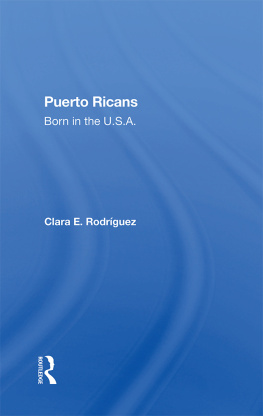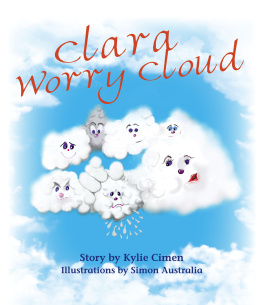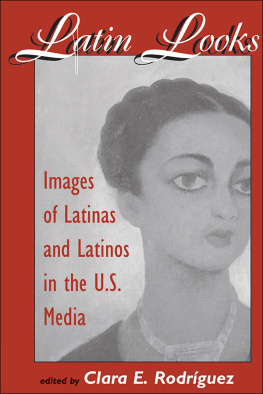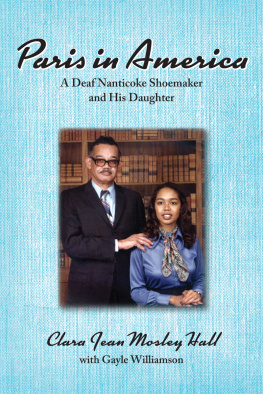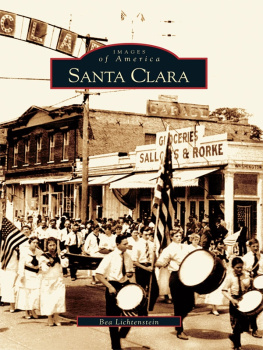NEW YORK UNIVERSITY PRESS
New York
www.nyupress.org
2018 by New York University
All rights reserved
References to Internet websites (URLs) were accurate at the time of writing. Neither the author nor New York University Press is responsible for URLs that may have expired or changed since the manuscript was prepared.
ISBN : 978-1-4798-5682-4 (hardback)
ISBN : 978-1-4798-1852-5 (paperback)
For Library of Congress Cataloging-in-Publication data, please contact the Library of Congress.
New York University Press books are printed on acid-free paper, and their binding materials are chosen for strength and durability. We strive to use environmentally responsible suppliers and materials to the greatest extent possible in publishing our books.
Manufactured in the United States of America
10 9 8 7 6 5 4 3 2 1
Also available as an ebook
To my precious family and to future global generations of media watchers.
I begin by sharing a story that illuminates for me the focus of this book. As I was conducting my research, an article in the Columbia University student magazine The Eye caught my eye. It noted that one-third of all Columbia students were now international students. The same article quoted one international student from Guangdong province, China, as saying that before enrolling at Columbia, he hoped to immerse himself in American culture in New York City, where he expected to make White friends who have blue eyes, yellow hair, and a hairy face. Since arriving, however, he had come to accept a different social reality: he had not ventured far from his network of Chinese friends. What was striking to me was not that his network was mainly Chinese, for as strangers in another land we tend to seek out those who speak our language and share our customs. What was striking to me was his expectation that American culture in Manhattan would be filled with White friends with blue eyes, yellow hair. Many variables may have contributed to his preconceptions of the United States in general and of New York City in particular. The article didnt address this, but, I wondered, how had his expectations been informed by his viewing of US television? To what degree was he aware of the influence of American television on his perceptions of what New Yorkers would be like? Did his preconceptionsand those of others who have also come to study or work in the United States or New York Citylimit or open up his understanding once he arrived? Finally, to what degree were his preconceptions and views similar to or different from those of millennials raised in the United States? Do US millennials from other states also anticipate New York City (or the United States, for that matter) to be similarly populated? And to what degree are they aware of the influence of US TV on their own perceptions?
The Foreign Born and American Television
My research had shown me that many Chinese students watch American TV as a way to learn the English language and American customs (Gao, 2013). My research had also taught me that in some countries with restrictive government policies (like China) or where television has been limitedby law or otherwiseUS TV programs are viewed on the Internet, cell phones, and computers more often than through traditional TV channels. In many countries, and in many regions (e.g., Eastern Europe), translation cells (often social groups) have sprouted up to add subtitles to US television programs and make them availablefor freeto anyone with an Internet connection. Websites, such as Hulu in the United States, have also made television programs readily available for viewing and downloading. Films have been similarly subtitled and distributed, but television is still in many cases more economical; and, unlike movies, TV programs allow viewers to develop a more continuous familiarity (and perhaps an ongoing identification) with characters and plotsoften in weekly segments.
But, as I read the article in The Eye, I was struck by what seemed to be an unconscious residue of this students watching American media, perhaps television in particular. This was his somewhat innocent expectation that, after coming to New York City, he would be surrounded by and become immersed in an American culture where he would make White friends with blue eyes, yellow hair, and a hairy face. Having lived in New York City for almost all of my life, I have known it to be a majority-minority city for decades. Indeed, few people who visit fail to notice this. Why, then, would this Chinese student have such a different idea about the type of people he would meet? I wondered: is it that our American media project the city so differently from the way it isand has beenin reality?
Patterns Found in US TV Serial Programming
For quite some time, a number of works (including my own) have examined racial, ethnic, gender, and class representations in US media and in network television. A consistent finding has been the underrepresentation of these groups relative to their proportion of the US populationand relative to their actual (proportionate) presence in the In addition, the way that certain racial and ethnic characters are drawn (e.g., as Latina/o villains, vixens, or victims; or, as Zia [2000] notes in the case of Asians, as gangsters, gooks, geishas, and geeks) often suggests that they are not or should not be seen as an integral or important part of the legitimate social structure that is central to the story on the screen. They are, in essence, othereddepicted as being other than us.
These misrepresentations have powerful impacts, as Merskin (2007:135) reminds us when discussing accumulation theory:
[I]f the mass media, including advertising, present information in ways that are consistent, persistent, and corroborated, this instruction is likely to have long-term, powerful effects. Stereotyping, as a media effect, gains power and credibility the longer and more regularly the same information is presented, in the same way, to the same audiences. These (re)presentations remain largely unchallenged so that carefully cultivated cultural constructions of race, ethnicity, sexuality, and gender become normalized in the American popular imagination.
In addition, although we are increasingly taught that race and gender are both social constructions, most of us still tend to look for markers of race and gender to evaluate people. We are still a race-conscious and gender-conscious society (Ryan, 2010:54). And, as many others have noted, the media, or the Fourth Estate, not only reflect and sustain such predispositions but also produce them, making them appear universal and a natural reflection of reality (Hall, 1982).
How do people in other countries receive these patterns that have been identified in US TV? Does the overrepresentation of White (male) characters in lead roles come to stand for or represent the universal, normative, average person? In the global market, does US Whiteness represent or signify the successful, modern human? How does the way that US media portray women and people of color influence people in other countries?
Also, how does US TVs coverage of controversial topicse.g., crime, education, religion, and classinfluence perceptions of othered groups in the United States and in other countries? Chavez (2013) provides an interesting illustration of how the coverage of immigration hyperbolizes and sensationalizes certain dimensions of immigration, while ignoring other aspects. He notes that when the Minuteman Project volunteers arrived in Tombstone, Arizona (population 4,800), in 2005 to monitor the border and the flow of illegal immigrants from Mexico to the United States, The number of media members here Friday to cover the volunteer border patrols nearly outnumbered the Minutemen. Reporters from around the world descended on Tombstone. Indeed, one of the organizers of the Minuteman Project, Chris Simcox, who was also editor of the




